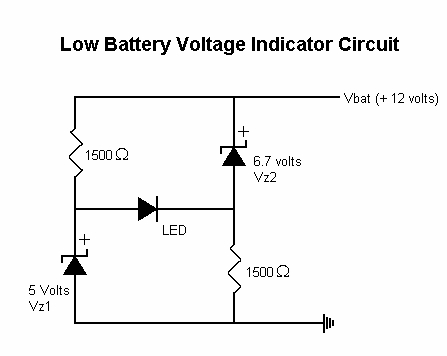Hello, is there such a thing as a diode that only allows current to flow once it has dropped below a threshold of 13.5 volts DC? Or maybe a transistor or other(very simplistic) circuit I can build? I don't need it to pass much current, only enough to trigger a dashboard light on a car project. It's for an alternator charge indicator light. All I want it to do is sample the battery positive system and keep the dash light off if the voltage is above 13.5v to indicate that the alternator is working. Thanks.



